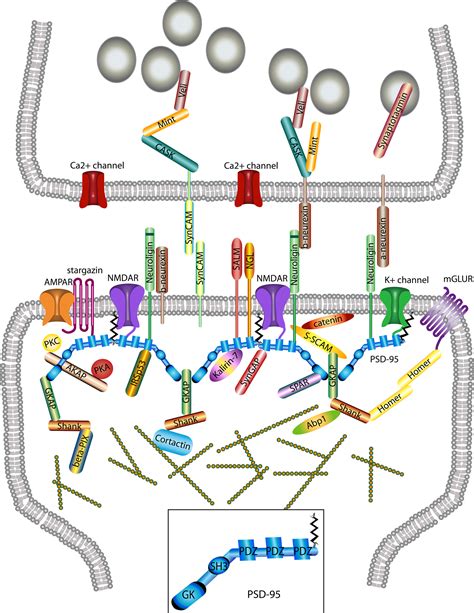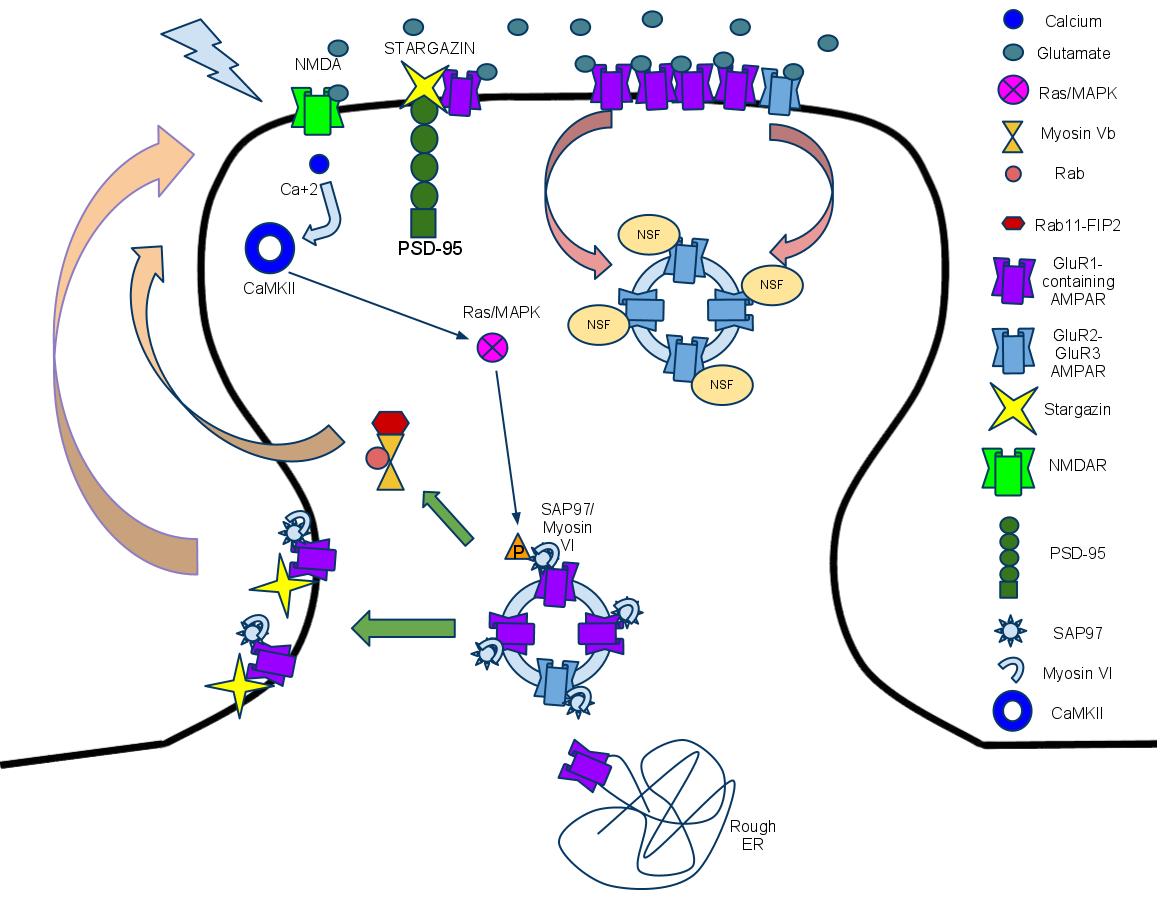Stargazin
2022-04-27: reference:
Stargazin (Transmembrane AMPAR regulatory protein (TARP γ-2)) (Calcium channel voltage-dependent gamma subunit 2 (CACNG2)) $\star$
 #
#


- It’s highly expressed in the Cerebellum but pretty sure it’s in the cerebrum, too. Take note it’s not like this is the only TARP that binds to GluR.
- So it binds to to GluR1, 2, and 4 of AMPAR. It targets them towards the synapse to bind its C-terminal tail to PSD-95. Once there, it stays, and regulates.
Phosphorylation #
-
Bidirectional Synaptic Plasticity Regulated by Phosphorylation of Stargazin-like TARPs
- It is able to be phosphorylated: it enhances the AMPA EPSC, and mutants lacking the PDZ domain depressed it. Duh.
- *Expressing a phospho-dead stargazin construct prevented LTP in hippocampal neurons, whereas expressing phosphomimic stargazin construct blocked LTD. *
- Dephosphorylated by NMDA sitmulation, PP1, and partially by PP2A and PP2B, mediating LTD.
- Likewise, consistent phosphorylation plays a role in LTP: CAMK II and PKC. No PKA or MAPK.
- Our in vitro kinase assays demonstrate that stargazin is comparable to GluR1 as a substrate for CaMKII. On the other hand, stargazin is far superior to GluR2 as an in vitro substrate for Protein Kinase C.
- Whereas phosphatases induce LTD in hippocampus, PKA specifically mediates LTD in the ventral tegmental area (VTA). R
- Phosphorylation does not modify the surface trafficking function, but according to R it mediates recruitment of eAMPAR. (via Protein Kinase C at least).